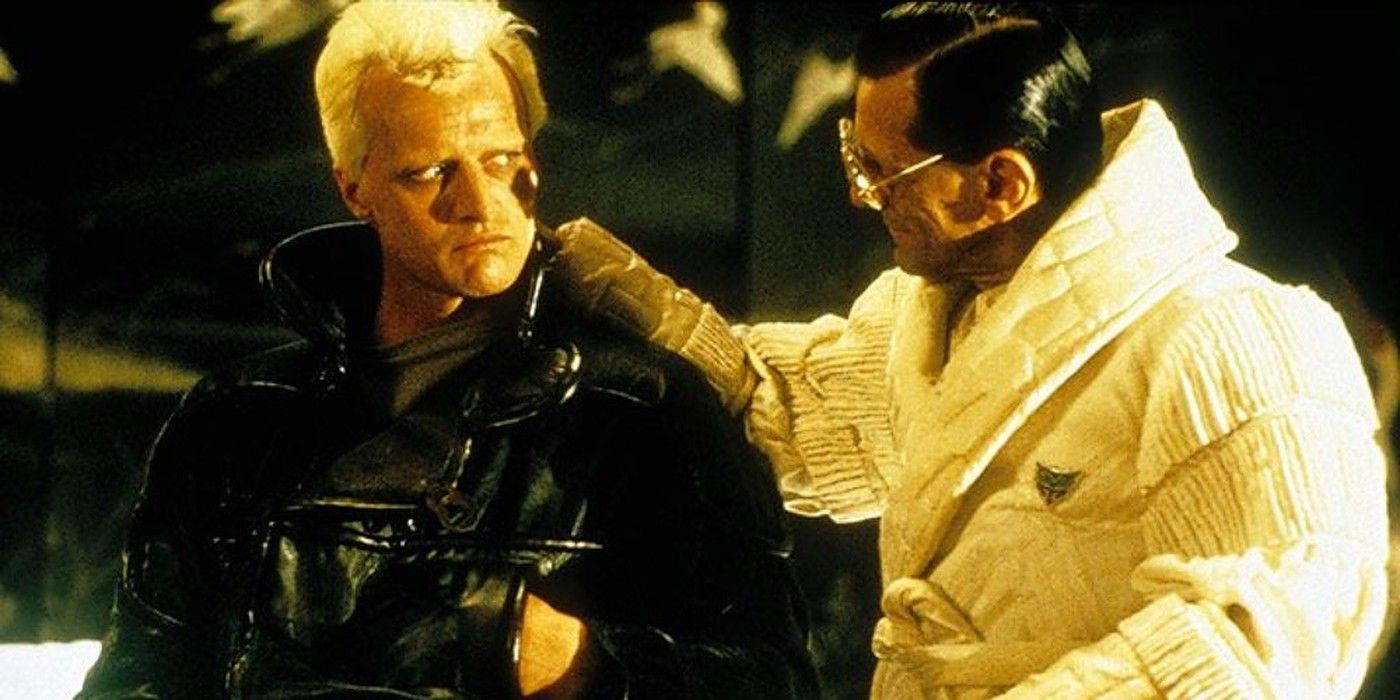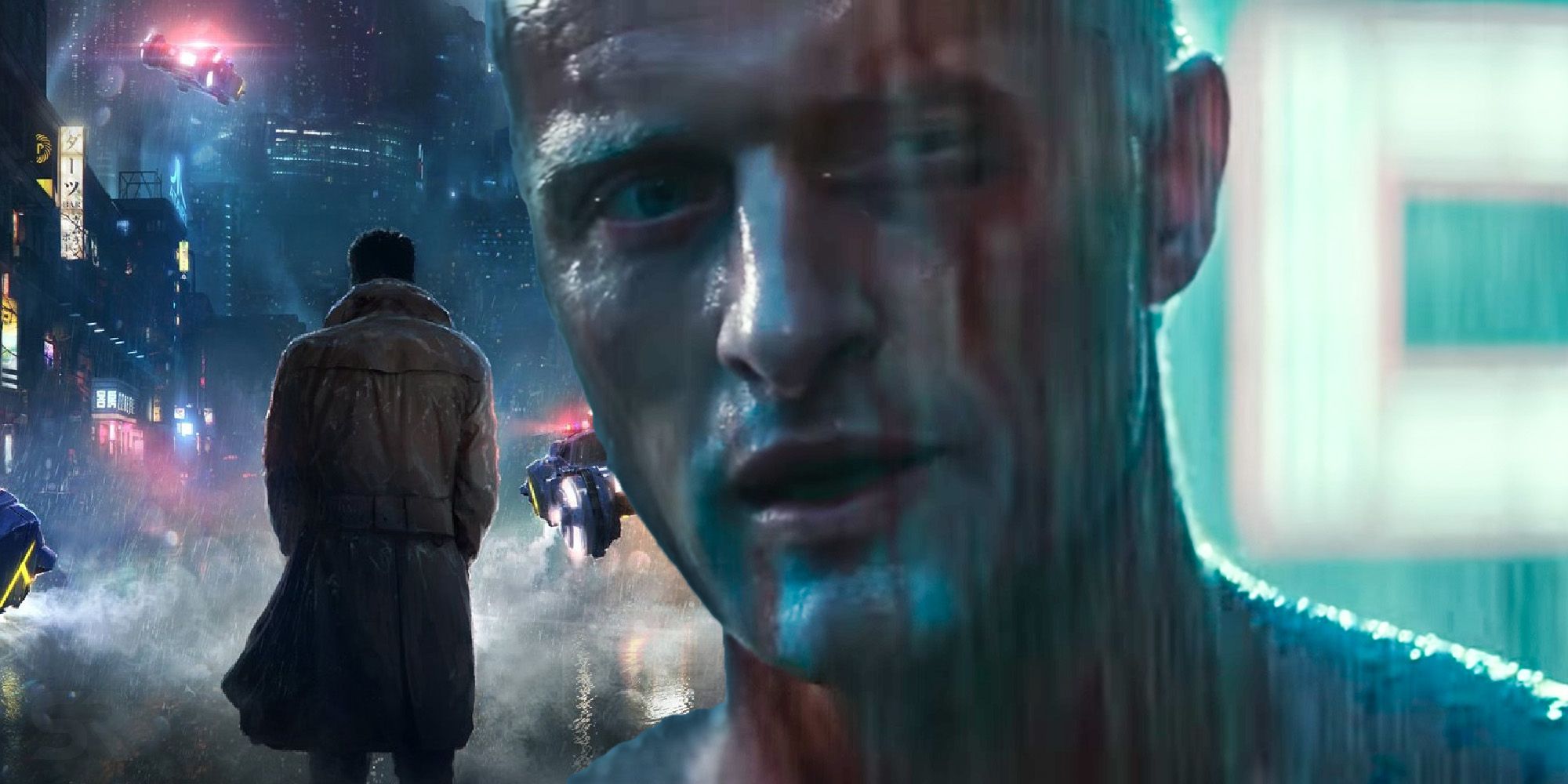Ridley Scott’s dystopian sci-fi extravaganza Blade Runner features a string of iconic scenes. An unforgettable sequence is one in which Roy Batty, a Nexus-6 combat model replicant, kills the founder of Tyrell Corporation, Dr. Eldon Tyrell, by brutally gouging his eyes out. Roy accomplishes this by manipulating J.F. Sebastian, a gifted genetic designer at Tyrell Corp., to gain access to Tyrell’s living quarters under the guise of a late-night, impromptu chess match. The sequence ends with an impact that unravels the dark, psycho-emotional dynamics between creator and creation, tinged with themes of patricide, dehumanization, and the classical Greek notion of hubris.
Creator-creation relationships have always been fraught with paranoia and unresolved anxiety, as exemplified in Mary Shelley’s Frankenstein, in which the identities of Promethean scientist and lonely creation are often indistinguishable in terms of monstrosity. This thematic sentiment is echoed in Blade Runner, wherein Tyrell assumes the mantle of the irresponsible maker, who summons life by engineering humanoid slaves like Roy, but denies them fatherly-love. Instead, he views them as replaceable pawns and strategic moves to garner corporate domination.
In one of Blade Runner's most interesting moments, Roy leads a group of renegade replications (Leon, Pris, and Zhora) in Off-World rebellion and a subsequent journey to Earth. Roy ultimately wishes to meet his maker to demand extended life. While Nexus-6 models like Roy were designed to be virtually indistinguishable from humans and possess bio-enhanced, para-physical abilities, they were programmed to live for a span of four years. After a fruitless attempt to break into Tyrell’s headquarters, Roy is directed to J.F. Sebastian, a timid geneticist with Methuselah Syndrome. On discovering Sebastian’s fondness for chess games with Tyrell (a master chess player), Roy and Pris are able to further their manipulation, utilizing it as a fatal move of Fool’s Mate. Much like this rare, two-piece checkmate move, which only occurs when White commits an “extraordinary blunder,” Tyrell’s hamartia lies in the fact he grants Sebastian access to his chambers, who, unbeknownst to him, is being guided in his winning moves by Roy.
Tyrell, dressed in pristine-white robes, is caught off-guard in his candle-lit chamber, which establishes a vastly-removed setting from the gritty, rain-drenched alleys of Blade Runner. Roy, dressed in all-black, approaches the "God of Biomechanics" and demands an extended lifespan. In turn, Tyrell tries to reason with Roy, the
"Prodigal Son," explaining that an established genetic sequence cannot be reversed. He also quips, “The light that burns twice as bright burns half as long - and you have burned so very, very brightly, Roy.”
Despite being human, Tyrell is apathetic toward his creations, nonchalant and unprovoked by the existential struggles they endure. Conversely, much like Frankenstein’s creation, Roy imbues the dual qualities of innocence and monstrosity. Despite being a synthetic being, he is engulfed in rage, concern, passion, pain, and ambiguity, emotions typically attributed to humans. When jilted by his father/creator, Roy expresses love by kissing Tyrell right before killing him—the kind of bruised, embittered love a child expresses toward an abusive, negligent parental figure. Also, pulling Tyrell closer before crushing his skill attempts to defy the curse of mortality inflicted by his maker, shown by snuffing out the creator’s life with his bare hands. With this, Roy reaches a critical point in his Blade Runner character arc: he realizes that as long as "the maker" churns out new replicants, they will always be treated as commodities and end-products, experiencing the same cycles of heightened xenophobia and oppression. With this act, the status-quo is subverted.
Roy then goes on to kill Sebastian. While one could argue Sebastian was seemingly blameless throughout the ordeal, replicants have no reason to show empathy to humans, who, for years, have utilized them for slave labor. Although Sebastian, due to On-World loneliness and accelerated ageing, wishes to befriend the replicants, he is also a genetic engineer, responsible for designing their neural pathways. This, unfortunately, makes him culpable as well. Also, having come so far as to commit patricide, it only makes sense for Roy to finish off any loose ends that stand in the way of his Blade Runner freedom.


